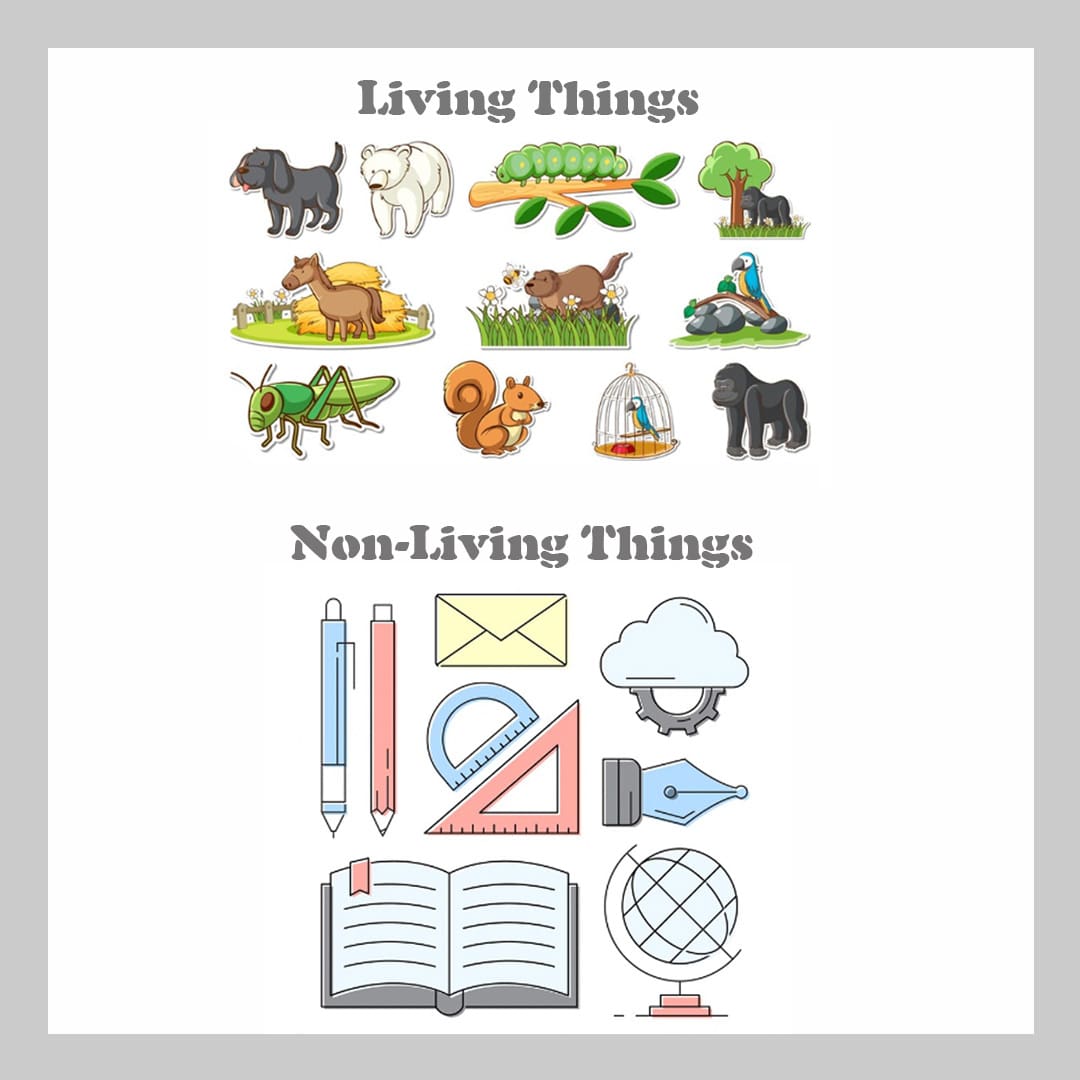

Please enter the code we just sent to whatsapp 91-11-46710500 to proceed
Didn't Receive OTP?

Unveil the differences between living and non living things with easy and simple definitions, fun examples, and clear characteristics for children. Let kids learn what makes something alive and what doesn’t in a simple and engaging way!
We have so many things around us like plants, oceans, animals, and mountains. Our Earth has a lot of things. These things are divided into two categories- living and non living things. Living things mean that the organisms that live. Non living things don’t breathe, grow, or move. They do not have any life.
While growing up, kids are taught about a lot of things. Living and non living things are one of the main things taught to the kids. This concept is taught to kids from a very young age. Living things bring about the best definition of life. Both, living and non living things are very important for Earth.
Let's understand all about living things and non living things.
It is important to know the living things and non living things definition from the initial stage. This would play an important role in better learning. Here are the definitions for living and non living things:
Living things have a life, they exist and are alive. They are made of cells. Living things grow in size and can move too. They also experience catabolic and anabolic reactions. Living things also breathe. They also reproduce as they produce a new life. Living things are immortal. They come with a particular lifecycle.
Non-living things are the ones that are no longer alive. They have no life or cells which is why they can't move or grow. They do not go through any anabolic or catabolic process. Moreover, non living things have no life span and aren't able to reproduce too. They do not need food to subsist. External forces have a huge influence on non living things as they contribute towards creation.
It is important to be familiar with the characteristics of living things. This would play an important role in the long run. Some of the common characteristics of living things are as follows:
Non living things, as known, are very different from living things. There are no similarities between the same at all. Some of the major non living things characteristics that you need to look into are as follows:
To understand these two better, it is important to know the examples of non living things and living things. Teaching the kids with examples can contribute to better learning. Moreover, it will also help the students grasp even the most complex concepts simply.
Here are some of the major examples of both, living and non living things.
Animals
Plants
Humans
Fishes
Bacteria
Germs
Chair
Mountain
Clothes
Cars
Gadgets
Tablets
To learn about living things and non living things, knowing about their differences is crucial. Being familiar with the difference is a great way to grasp the concept.
Below are the living things and non living things difference that you must know of:
|
Living Things |
Non Living Things |
|
Living things have a life. |
Non living things are not alive. |
|
Living things can reproduce. They give birth to their young ones transferring genetic information. |
Non living things do not reproduce. |
|
Living things depend on air, water, and food so that they can survive. |
Since non living things do not have life, they do not need anything to survive. |
|
Living things respond to stimuli. Therefore, they are sensitive. |
Non living things never respond to stimuli. Therefore, they aren't sensitive to external touch. |
|
All living things experience metabolic reactions in their bodies. |
None of the living things undergo metabolic reaction. |
|
The cells grow in living things. This helps them move and grow. |
Non living things are not able to move and grow. |
|
Living things have a specific lifestyle. They are mortal, which means that they die after their lifespan is over. |
Non living things are immortal which means they don’t have a limited lifespan. |
|
Living things have locomotory movement. Therefore, they can move from one place to another freely. |
Non living things are not able to move. They need an external force to move. |
|
Living things have respiration. All living things have a gas exchange in their cells. |
Non living things do not experience respiration. |
|
Some of the common examples of living things include plants, animals, and insects. |
Some of the common examples of non living things include buildings, phones, pens, and rocks. |
Living and nonliving things are very crucial for kids to understand. Kids should be taught about these concepts from a young age. Each of them has its own benefits and characteristics. Knowing the living things and non living things difference can be helpful. It will allow the kids to distinguish between different things.
Q: Why are plants an example of living things when they are unable to move?
Ans: A major reason why plants are known as living things is that they are made from living cells. They also grow. It may be surprising, but some plants grow too.
Q: Is water a non-living thing?
Ans: Yes, we consider water as a living thing. Water is crucial for all living beings. However, it does not have a life of its own. Some living beings also use water as their habitat. Therefore, it is not an organism in itself.
Shape Your Kid's Future with Bambinos Classes | Bambinos.live India's No. 1 English Communication Platform For Kids | Click here to Book a Free Class Limited time offer.